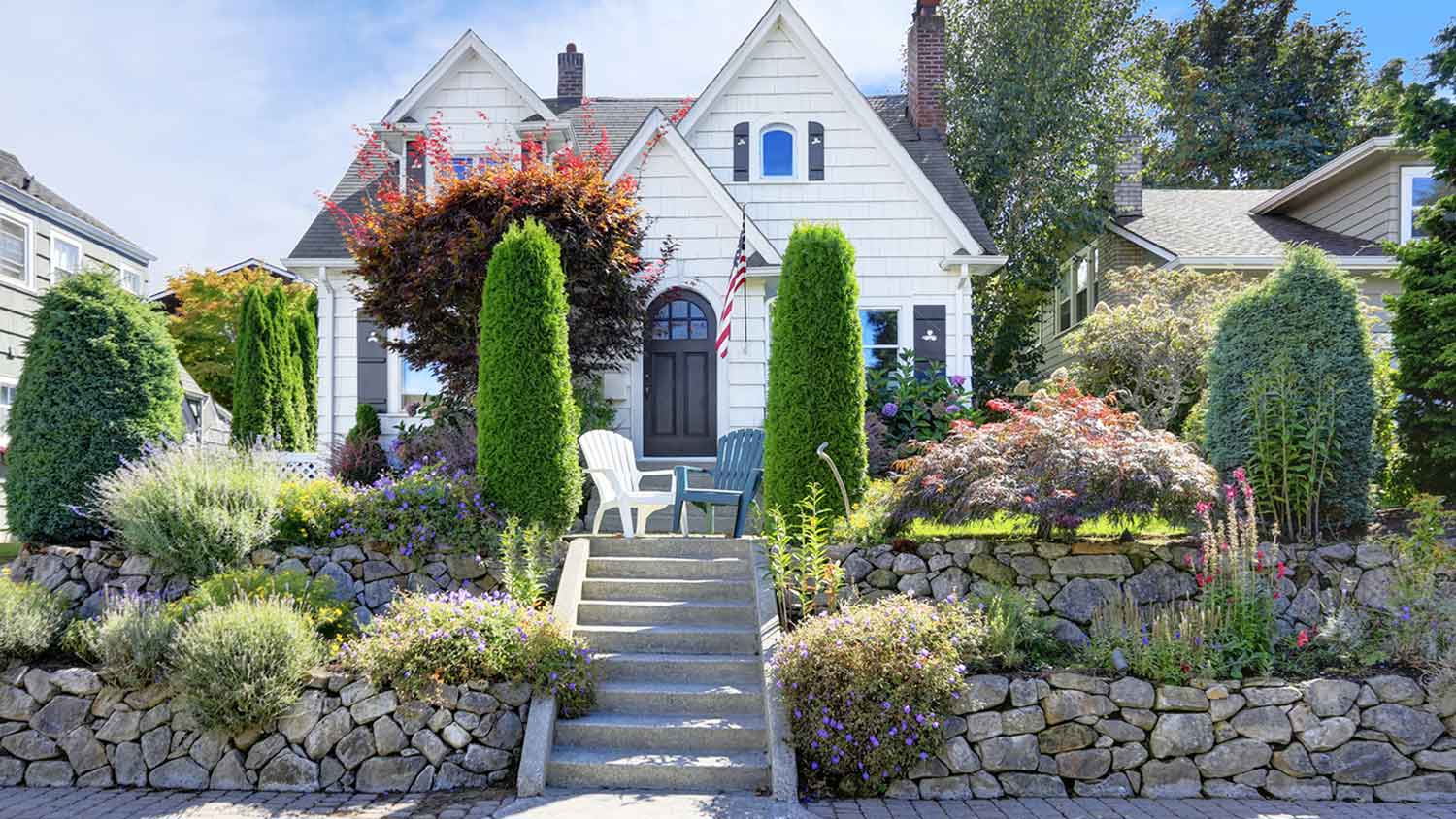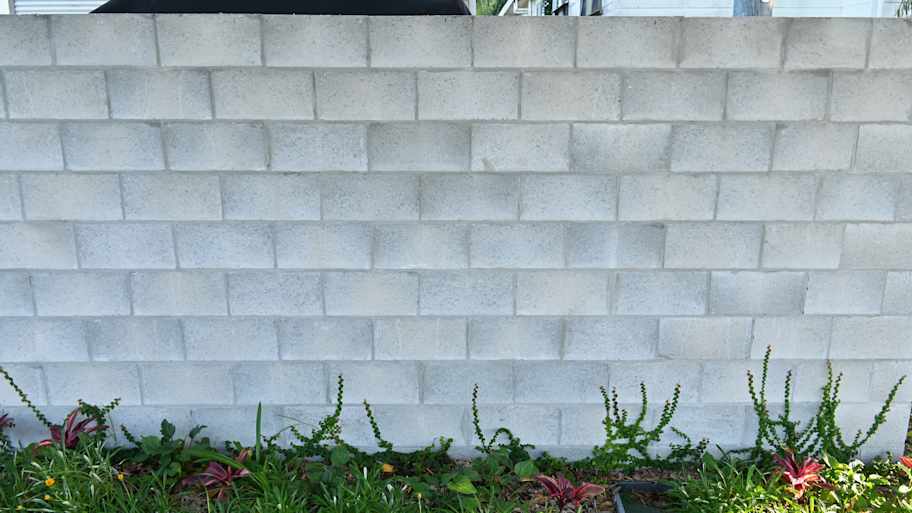
Retaining wall repair cost can vary widely based on the age and condition of the wall being restored. Learn why finding the right pro is important for getting the job done.
Decomposed granite is a mineral-rich landscaping secret you can use to scale up your yard


Decomposed granite is an attractive alternative to gravel or sand if your budget allows.
If you’re using it for areas that need stability, like walkways or driveways, upgrade to stabilized or resin-coated decomposed granite.
Decomposed granite starts at $60 per ton but can nearly quadruple if coated in resin or if you choose a unique color blend.
Maintenance is similar to gravel and requires general upkeep throughout the year.
Decomposed granite is a serious landscaping upgrade that, once you know it exists, you see it in many yards with epic curb appeal. But what, exactly, is this mystery material, and how can you use it to make the most out of your yard? Here’s the 411 on decomposed granite.
Decomposed granite, or DG for short, is a finely weathered and eroded form of granite—a hard rock rich in minerals like quartz, mica, and feldspar. Most DG you’ll find in stores is composed of particles as large as 3/8 of an inch and as fine as dust.
DG is mined in quarries from many regions of Northern America, giving way to many natural hues and colors, like varying browns, reds, golds, grays, greens, and tans. This variety allows you to customize your landscaping project to your aesthetics.
When taking on this project, expect questions only a pro can answer. With our network of local pros, you'll get the job done and your questions answered—without the hassle and stress of doing it yourself.
Compared to gravel, DG is far more stable without losing its form, while compared to sand, DG is much less likely to wash away. This makes the hardscape material ideal for the following elements of your yard:
Walkways
Patios
Driveways
Mulch
Roads
Garden trails
Xeriscapes
Fire pits, and more

One of decomposed granite’s biggest perks is that it comes in various colors and particle sizes. And yes, this even includes glow-in-the-dark decomposed granite! However, with so many options to consider, there are still just two main types of decomposed granite: natural DG and stabilized DG.
Natural DG costs around $60 per ton and is the go-to for gardening projects and tree landscaping. You can use natural DG as you would mulch since it eventually breaks down and gives nutrients to nearby plants and soil.
The best part about this type of DG is that it outlasts wood mulch and deters those pesky animals from digging away at your garden beds.
As beneficial as natural DG is for gardens, it’s not exactly the perfect material for your driveway, pathway, patio, or trail. You’ll want to use stabilized decomposed granite for these projects, which costs $185 per ton.
As the most expensive type of decomposed granite, stabilized DG has the look and feel of an asphalt surface, only it has a more earthy color and is way more absorbent. Stabilized DG costs more than natural DG because your supplier needs to bind the material with a stabilizer agent, such as a resin, and allow the granite to decompose.
Decomposed granite with resin is the strongest type. The decomposed granite is combined with resin additives to form a durable, permeable surface, making it a practical option for driveways. This natural-looking surface acts like asphalt but looks more natural. Your driveway will last longer as resin-coated decomposed granite is stable, but it does cost more at $225 per ton.

As with any home improvement project, whether or not decomposed granite is worth it really comes down to personal preference. If you’re looking for a versatile, natural, and affordable landscaping material, there’s a good chance decomposed granite is a good fit for your project.
But just in case you’re not sure, here are the pros and cons of decomposed granite:
Mimics the sound, look, and feel of gravel without the loose footing
Very permeable and suitable for runoff water if compacted well
Lasts longer than mulch while providing similar benefits to trees and plants
Hides unsightly patches of ground where grass won’t grow
Deters squirrels and other critters from digging around your yard
More natural than stark white or grey hardscape material
Breaks down and won’t obstruct garden beds if moved out of place
Affordable
Not suitable for stormy areas or major slopes, as the material can wash away with heavy rain.
Sticks to shoes, leading to a very messy home if installed too closely to entry points
Will also scratch indoor flooring if it finds a way inside
You or the installer needs to apply, moisten, and press the decomposed granite in thin layers to compact it successfully
Needs to be reapplied as it breaks down (though it’s relatively easy to pour more material down)
Your landscape, environment, and desired aesthetic will inform the type of hardscaping material you need. For example, stone pavers are ideal for temperate climates. If you're not sure what material is right for you, consult with a landscaping professional.
Before you load up bags upon bags of granite into your shopping cart, you’ll want to budget all your hardscaping costs.
Decomposed granite costs between $0.30 and $0.70 per square foot on average and is an affordable alternative to other paving materials. For comparison, the cost of gravel is somewhere between $1.25 and $1.80 per square foot.
To help put that into perspective, consider a 400-square-foot area. To hire a gravel installation contractor near you, you’ll pay around $120 to $280 for supplies and between $120 to $300 extra for the installation.
DG is a low-maintenance landscaping idea that can last up to 10 years if properly installed. Similar to other landscaping materials, it’s important to keep weeds and other debris from piling up on the surface. You will also need to:
Avoid parking cars or dragging heavy furniture across the surface
Look out for pooling water and invest in additional drainage if needed
Consider adding a sealer on top to avoid discoloration
Occasionally refill and compact with fresh DG to fill any holes or dips in the surface
You can create just about any landscape design on a hill, but if you have a severe slope a professional landscaper can help install new drainage. Pooling water can lead to damaged plants and yards.
From average costs to expert advice, get all the answers you need to get your job done.

Retaining wall repair cost can vary widely based on the age and condition of the wall being restored. Learn why finding the right pro is important for getting the job done.

Looking to elevate your backyard aesthetic with a patio? Use this paver patio cost guide to help you estimate your total project cost before you get started.

The cost of stone steps can vary considerably depending on the material you choose and how much labor is required. This guide shows you the cost of popular stone steps and all the extra fees you need to consider when tackling this project.

How many cinder blocks do I need? This calculator will help you estimate what you’ll need to complete your project with ease.

Have you noticed your pavers sinking or would you like to forget about the stains on your driveway? Here are common paver problems and what to do about them.

If your yard is looking drab, installing interlocking pavers can be a smart way to increase your home’s curb appeal. Here are some common questions you’ll discuss with a pro.